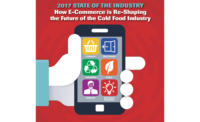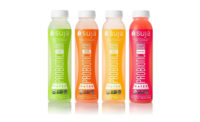In 2003, my first year attending the Annual Industry Coupon Conference, hosted by the Association Of Coupon Professionals, Drexel Hill, Pa., I remember some bold statements made by digital companies on the future of coupons.
The free-standing insert (FSI) was going to become extinct, and digital would take over.
Thirteen years later, the coupon industry is still waiting for this to happen.
How the digital landscape has changed in recent years
During the past three or so years, the digital players have undergone significant changes to adapt to the changing demands of both retailers and brands.
Coupons, Inc., Mountain View, Calif., for instance, changed its name to Quotient Technologies, Inc. and acquired Shopmium, a European mobile receipt app. Quotient also launched Retailer iQ, a personalized shopper app with real-time analytics.
News America Marketing, Chicago, acquired Checkout 51, a Canada-based mobile receipt app.
Catalina USA, St. Petersburg, Fla., acquired Cellfire, a digital download provider app. Catalina also entered into partnership with Savings.com, which is owned by Cox Target Media, St. Petersburg, Fla.
Inmar Inc., Washington, D.C., acquired Hopster.
New York-based Revtrax is now focusing on targeting offers for each shopper and measuring those offers.
The Kroger Co., Cincinnati, acquired YOU Technology Brand Services, Inc., Brisbane, Calif.
And, many other companies are exploring how to marry purchase data to execute programmatic targeting or one-to-one targeting. There are also new, revised apps for shoppers such as Flipp and Pirc, which marry coupon incentives with ad features by store, showing consumers where to buy items for the best savings.
FSI and digital coupon vehicles
The FSI continues to be the overwhelming vehicle of choice to deliver consumer incentives.
According to Kantar Media, New York, in 2015, there were 286 billion FSI coupons circulated with an average face value of $1.80. Also, a recent News America and GfK study reported that on average, “75% of consumer packaged goods coupon redemptions, across all types, result in incremental sales.”
Of the 38 coupon vehicles available to manufacturers and as tracked by Inmar, the four with the most focus from brands is FSI and digital.According to Inmar’s 2015 Industry Trends, FSI coupons accounted for 89.1% of all coupons distributed with an average redemption rate of .39%, down slightly vs. 2014.So, for every thousand coupons, 39 of them are being used to purchase the product. And, with a maximum distribution of nearly 70 million for an FSI, this can quickly add up to significant incremental sales. The volume generated and strong ROIs vs. other delivery vehicles keep the CPGs coming back.
Digital, which has garnered significant attention and investment, still only accounts for 2.9% of all distributed coupons. The redemption rates are higher than the stalwart FSI, but in 2015 those redemption rates declined rather significantly. The implementation costs per coupon redeemed are higher as well.
The initial promise of digital coupons
The promise of digital coupons was the quick ability to respond to competitive threats, the promise of incredible efficiencies of digital offers, the ability to target consumers and so on.
In reality though, digital offers can be developed and trigger a sale more quickly than FSIs, but the rest of the benefits and value proposition is rather limited, depending on category and brand. Digital offers actually cost more on a cost per unit moved than FSIs, and may not have scale to cover the United States like an FSI.
Pros of FSIs:
· Drives mass awareness at low cost.
· Rewards loyal users or brings new users into franchise.
· Used to stock up consumers.
· Drives trade merchandising.
· Provides focus for sales people to sell.
· Communication platform to state benefit.
· Provides reason/incentive to buy.
Cons of FSIs:
· Long lead time.
· Declining redemption rates.
· Declining newspaper circulation.
· Older audience.
· Duplicative and free unaudited circulations.
Pros of digital:
· Short lead time.
· Reacts more quickly to competitive threats.
· Can be easier for consumer to use.
· Growing retailer acceptance as standard practice grows.
· Audience skews younger.
Cons of digital:
· Lacks scale, though improving.
· Lacks equity communication platform.
· Consider electronic trade TPR by many.
· Fraud is issue with print at home.
· Potential stacking issue with some retailers.
· No physical reminder.
Contrasts of FSI and digital coupon vehicles
As a proven coupon delivery vehicle, there are many benefits to FSIs. However, here are some issues still confronting the increased use of digital coupons in the CPG industry.
FSI advertisement with incentive vs. thumbnail. Unlike the FSI that can easily convey a consumer benefit, the digital coupon fails in this key area. Part of the appeal of an FSI is the ability to create awareness, reward loyal users, attract new users and drive merchandising opportunities. FSIs are a “creative canvas” that the brand uses to inform the consumer the unique benefit that the product fulfills. Great FSI creative copy is visually appealing and conveys the brand benefit with an incentive to purchase. The FSI paper coupon also acts as a reminder when in the store, as it is tangible and readily available.
Contrarily, the digital coupon is a tiny thumbnail, with little room to convey anything on the image, which can be an image of the product. The minimal savings communication forces the consumer to make decisions based on savings vs. reason to buy vs. a different brand. And, once it is downloaded to a card, good luck on trying to remember when in the store.
Consumers are highly distracted and often preoccupied or in a rush, and for these and other reasons, can’t depend on remembering their digital coupon, as opposed to a solid printed coupon in their pocket, which is likely easier to find and use at the counter at the time of purchase. In short, the digital coupon has limited messaging unless a consumer likes the flexibility of using a print-at-home coupon without feature price.
Fraud. Fraud is a constant issue with all coupons, but digital coupons lend themselves to consumer tampering. Printing out a coupon, even in black and white, lends itself to being photocopied. Although there have been many advances within the digital arena, fraud is still a concern.
CPG industry is like a turtle. The CPG industry is a behemoth, and implementing and accommodating new digital technologies is slow. While the digital providers can move fast, they need to have brands to participate and retailers on board depending on the application.
Retailers simply can’t move as fast, and any change has a long lead-time and can be very costly to implement.
Are Millenials going to adopt to the Sunday FSI? The short answer is yes. Every Sunday, the newspaper is filled with inserts worth a lot of money, including the FSI inserts from SmartSource and RedPlum or P&G’s brandSAVER.
The Millennials with kids are adapting to the paper and understand the value and ease of the paper coupon, much like their parents and grandparents saw the value in the late 1970s and early 1980s. According to a 2014 News America study on attitudes and usage of coupons, Millenials with kids use the FSI (69%) comparable as the total U.S. population (70%).
To stack or not to stack. Stacking is when the consumer uses various coupons (manufacturer and retailer) from different vehicles to purchase a product for far less than what the manufacturer intended. The manufacturer maintains policies and rules on how each coupon can be used, but most of these rely on a checkout person to read the fine print and ensure that stacking doesn’t happen. This is likely easier said than done, especially with inexperienced check-out employees.
The good news is that brands are being very careful with digital incentives, and learning that high face values on digital aren’t as critical to the consumer and that digital incentives can be more of a trade spend or TPR.
The future of FSI and digital coupons
There are many different views on the future of coupons depending on who is telling the story. Yes, customization is the new frontier and excites anyone in the digital coupon space. The FSI is a relatively low-cost vehicle with mass appeal, and a favorite of marketers for coupon vehicle.
The FSI will be a critical part of the mix and will be around for many years. Millenials will adapt to the FSI paper more than people think.
Digital providers will also most likely continue to consolidate to provide brands with a more scalable and efficient vehicle.
Retailers and manufacturers will continue to work together for mass customization by combining loyalty card data with other data elements for one-to-one electronic marketing.
And, the new digital direction for many digital coupon providers is to offer a complete end-to-end management system with built-in measurement tools where brands can target on a one-to-one basis, allowing for complete customization to create a more solid “brand relationship.” However, this will be the most expensive option, and brands will want to fully understand the benefit to cost value and if this can bring in new users.
Just remember to keep those favorite scissors handy and those coupon apps up-to-date; you don’t want to miss a high-value coupon on your favorite frozen meal.








